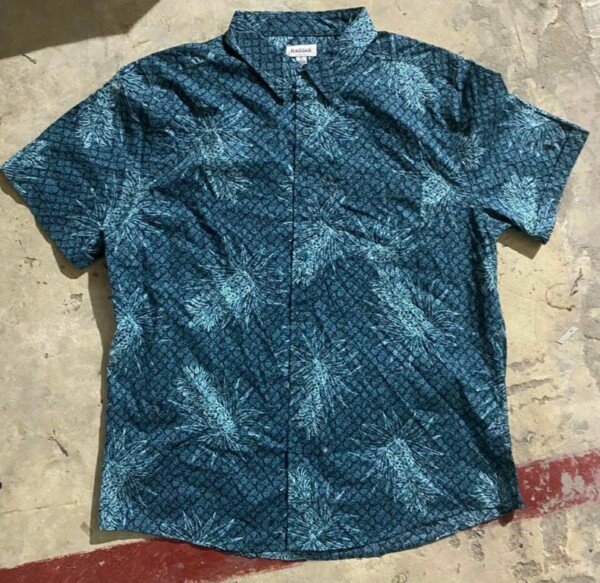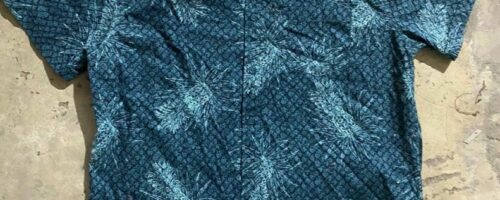
Savar, Bangladesh
How is it produced?
It is produced in the garment factories of Savar, Bangladesh. Thousands of garment workers, especially women work together in these factories in eight-to-ten-hour shifts to produce thousands of shirts each day.
Describe the supply chain to the store shelf in Canada:
After the shirts are manufactured, they are packaged and shipped by the suppliers. The shirts then find their way to giant container ships, and the ships bring the clothes to the shipping ports of Europe and other container ships make their way to North American shipping ports. From the shipping ports, they are carried in trucks and shipped to various locations, especially grocery stores like Walmart and superstore.
What is the power balance between the producer and seller?
As per my research, it is important to discuss the power balance between the producer and seller, specifically from the perspective of clothing companies like Lidl, Zara, and H&M. These companies have been found to pay garment suppliers less than the cost of production in Bangladesh, resulting in suppliers barely being able to cover the minimum wage to pay their workers (Butler, 2023, para.1). Majority of these garment suppliers from Bangladesh have reported being consistently underpaid, despite rising costs of raw materials and production, especially after the COVID-19 pandemic (Butler, 2023, para.3).
According to Parkin (2023), big Western fashion brands are not paying “ethical” prices for Bangladesh-made clothes (Parkin, 2023, para.1). The president of the Bangladesh Garment manufacturers, Faruque Hassan, has blamed Western brands for not increasing payment to suppliers, which results in suppliers being unable to pay higher wages to garment workers (Parkin, 2023, para.4). Further, Faruque Hassan has stated that while the cost of financing, production, and gas for suppliers has gone up, suppliers still take orders from big brands at a break-even price because they must keep the factory running (Parkin, 2023, para.6).
Can you recommend changes to the system to improve the balance?
To improve the balance, big clothing brands must pay the correct price for the clothes they order and buy, so that suppliers can recover their costs and pay the workers their fair share of wage. And the World Trade Organization can also look into the matter by enforcing fair trade rules on the clothing brands or they can raise the issue of unfair trade practices to the clothing brands host country.
References/Resources:
References
Chan, E. (2021, August 27). Major High Street Players Are Committing To Protect Garment Workers In A Vital New Agreement. Vogue. https://www.vogue.co.uk/news/article/handm-zara-bangladesh-accord-garment-workers
(2023, January 11). Global fashion brands exploiting Bangladesh workers: Study. Aljazeera. https://www.aljazeera.com/news/2023/1/11/fashion-brands-paid-less-than-production-cost-to-bangladesh-firms
Butler, S. (2023, January 11). Lidl, Zara’s owner, H&M and Next ‘paid Bangladesh suppliers less than production cost’. The Guardian. https://www.theguardian.com/business/2023/jan/11/lidl-zara-owner-hm-next-bangladesh-suppliers
Chan (2021, March 10). Bangladesh garment exporters say western brands not paying ‘ethical prices’. Financial Times. https://www.ft.com/content/fbba322d-597d-4c51-a51b-8e66b436e057
Sharpe, S. (2022, February 6). Assessing the impact Environmental impact assessment in the textile and garment sector in Bangladesh, Cambodia, Indonesia and Viet Nam. International Labour Organization. https://webapps.ilo.org/wcmsp5/groups/public/—asia/—ro-bangkok/documents/publication/wcms_838007.pdf
Saisi, B. (2023, April 13). Fast Fashion: Why garment workers’ lives are still in danger 10 years after Rana Plaza — Podcast. The Conversation. https://theconversation.com/fast-fashion-why-garment-workers-lives-are-still-in-danger-10-years-after-rana-plaza-podcast-203122
Sakib, N. (2023, January 12). Garment industry in Bangladesh struggles to contain pollution. Dialogue Earth. https://dialogue.earth/en/pollution/garment-industry-bangladesh-struggles-to-contain-pollution/
(2017, February 15). How Dialogue is Shifting Bangladesh’s Textile Industry from Pollution Problem to Pollution Solution. The World Bank. https://www.worldbank.org/en/news/feature/2017/02/15/how-dialogue-is-shifting-bangladeshs-textile-industry-from-pollution-problem-to-pollution-solution
Hannak, J. (2023, June 4). Supporting Sustainability and the Environment in Bangladesh’s Textile and Leather Sector. Adelphi. https://adelphi.de/en/projects/supporting-sustainability-and-the-environment-in-bangladeshs-textile-and-leather-sector
Begum, T. (2023, November 15). Bangladesh garment workers fighting for pay face brutal violence and threats. The Guardian. https://www.theguardian.com/global-development/2023/nov/15/bangladesh-garment-workers-fighting-for-pay-face-brutal-violence-and-threats

